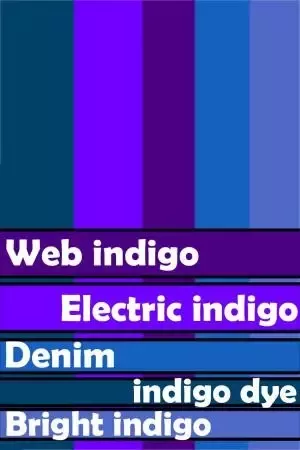Exploring the Benefits and Applications of Natural Indigo Dye Products for Sustainable Fashion
The Allure of Natural Dye Indigo Products
In an era where sustainability and environmental awareness are paramount, the resurgence of natural dyes in the textile industry has captivated the attention of consumers and artisans alike. Among these natural dyes, indigo holds a special place, revered not only for its vibrant hue but also for its deep cultural significance and ecological benefits. This article delves into the world of natural dye indigo products, exploring their history, production processes, and contemporary applications.
A Historical Perspective
Indigo, derived from the leaves of the Indigofera plant, has a rich history that dates back thousands of years. Used by ancient civilizations in regions like Egypt, India, and China, this alluring blue dye was a symbol of wealth and social status. The art of indigo dyeing has been passed down through generations, with traditional methods still being practiced in many cultures today. The historical significance of indigo is immense—it was once so valuable that it was often referred to as blue gold.
The Process of Indigo Dyeing
The journey of creating indigo-dyed products begins with the cultivation of indigo plants. Farmers typically grow these plants in warm climates, where they flourish. Once harvested, the leaves undergo a fermentation process, which extracts the dye compound known as indican. This is then oxidized to produce the rich blue color associated with indigo.
The dyeing process itself is an art form. Fabrics are dipped repeatedly into the dye bath, where they take on layers of color. This immersion can produce various shades of blue, ranging from pale sky tones to deep navy hues. Each dip is followed by exposure to air, which facilitates the oxidation process, gradually intensifying the color. The uniqueness of this method is that the final shade can’t be determined until the fabric has been fully dried. This element of surprise adds to the charm of indigo-dyed products.
The Environmental Benefits
natural dye indigo products

Natural indigo dyeing stands in stark contrast to synthetic alternatives, which are often derived from petroleum-based chemicals. The use of indigo is a sustainable practice that minimizes environmental impact. Indigo cultivation requires less water compared to cotton production, and the dyeing process does not involve toxic, harmful substances. Additionally, many artisans follow organic farming practices, ensuring that the land remains healthy and biodiversity is maintained.
Importantly, natural dyes, including indigo, are biodegradable, making indigo products a sustainable choice for eco-conscious consumers. As the fashion industry grapples with its ecological footprint, the rising popularity of natural dyeing methods offers a pathway towards more responsible fashion choices.
Contemporary Applications
Today, indigo is experiencing a renaissance, with a growing appetite for natural dye products across various sectors. Fashion designers are increasingly incorporating indigo-dyed fabrics into their collections, celebrating their unique textures and colors. Traditional techniques are being melded with contemporary styles, resulting in garments that embody a rich history while appealing to modern aesthetics.
Moreover, indigo is also finding its place in home décor. Upholstered furniture, cushions, and curtains made from indigo-dyed textiles add an artisanal touch to living spaces. These items often tell a story, reflecting the culture and artistry involved in their creation.
Beyond textiles, the indigo dyeing process has inspired a myriad of artistic endeavors. Collaborations between artisans and contemporary artists have led to stunning visual displays that showcase the beauty of natural indigo, bringing attention to the intricate craftsmanship involved in traditional dyeing practices.
Conclusion
Natural dye indigo products are more than just beautiful textiles; they embody a philosophy of sustainability and cultural heritage. As consumers become more conscious of their choices, the demand for indigo-dyed products is on the rise. Supporting artisans who practice these age-old techniques not only preserves an invaluable tradition but also encourages a more sustainable future. Embracing indigo is about more than aesthetics; it’s a movement towards valuing the earth and its resources, making a conscious choice to wear—and promote—something that is as beautiful as it is responsible. The journey of indigo, from its natural origins to the finished product, illustrates the delicate balance between tradition and innovation in our ever-evolving world.
-
The Timeless Art of Denim Indigo Dye
NewsJul.01,2025
-
The Rise of Sulfur Dyed Denim
NewsJul.01,2025
-
The Rich Revival of the Best Indigo Dye
NewsJul.01,2025
-
The Enduring Strength of Sulphur Black
NewsJul.01,2025
-
The Ancient Art of Chinese Indigo Dye
NewsJul.01,2025
-
Industry Power of Indigo
NewsJul.01,2025
-
Black Sulfur is Leading the Next Wave
NewsJul.01,2025

Sulphur Black
1.Name: sulphur black; Sulfur Black; Sulphur Black 1;
2.Structure formula:
3.Molecule formula: C6H4N2O5
4.CAS No.: 1326-82-5
5.HS code: 32041911
6.Product specification:Appearance:black phosphorus flakes; black liquid

Bromo Indigo; Vat Bromo-Indigo; C.I.Vat Blue 5
1.Name: Bromo indigo; Vat bromo-indigo; C.I.Vat blue 5;
2.Structure formula:
3.Molecule formula: C16H6Br4N2O2
4.CAS No.: 2475-31-2
5.HS code: 3204151000 6.Major usage and instruction: Be mainly used to dye cotton fabrics.

Indigo Blue Vat Blue
1.Name: indigo blue,vat blue 1,
2.Structure formula:
3.Molecule formula: C16H10N2O2
4.. CAS No.: 482-89-3
5.Molecule weight: 262.62
6.HS code: 3204151000
7.Major usage and instruction: Be mainly used to dye cotton fabrics.

